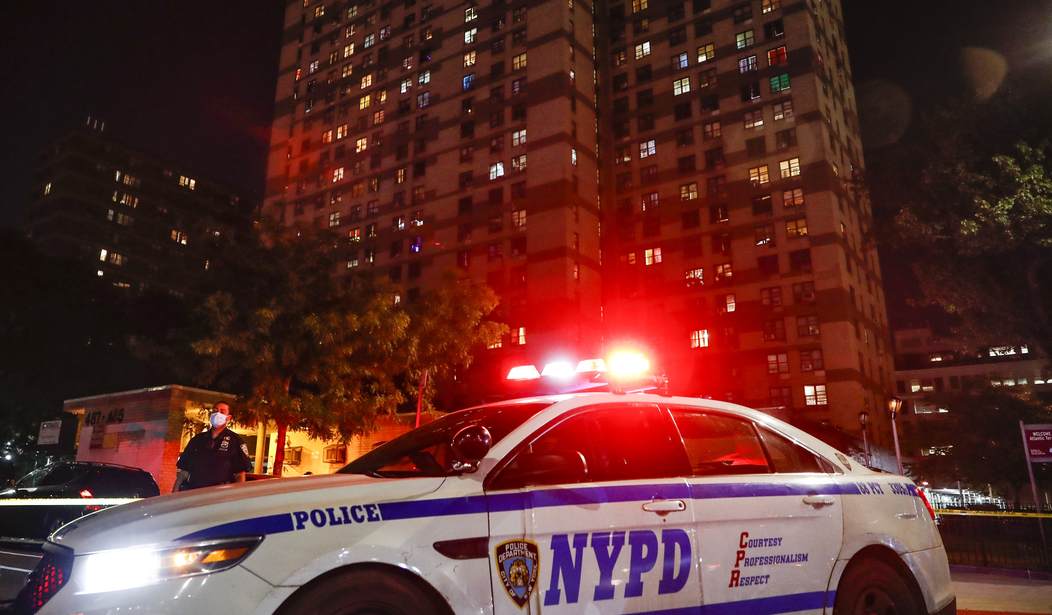In 2020, both violent crime and the number of guns that were legally sold spiked to record high levels, and ever since anti-gunners have tried to make the case that the Great Gun Run of 2020 had a causal effect on the nation's crime rate. With more "guns on the street", so the theory goes, there's more gunplay taking place, and that wouldn't have happened were it not for millions of Americans choosing to exercise their Second Amendment rights over the past few years.
The New York Times has published a new analysis of "gun violence" since the COVID pandemic, and while the paper doesn't pin all of the blame on gun sales, it still uses gun control "experts" to make the case that rising gun sales have led to an increase in violent incidents.
“There are a lot more guns on the street and when people get angry and frustrated, instead of getting into a fistfight, they get into a gun fight,” said Dr. Regan Williams, an emergency room directorat a Memphis children’s hospital who has seen a spike in young shooting victims.
Though the level of violence has fallen since the worst days of the pandemic, Americans are still shooting and killing one another more frequently than they did in the years before the coronavirus arrived. The long-term impact of the surge in violence is being felt in many corners of the nation, and researchers will undoubtedly study it for years to come.
“We’re taking a few steps back from the cliff,” said Dr. Garen J. Wintemute, an emergency room doctor who directs a violence prevention research programat the University of California, Davis. “But there are some ominous developments. What happens in a society that is increasingly violent, increasingly mistrustful, increasingly polarized, increasingly indulgent in hate rhetoric?”
Now, if violent crime was pegged to the number of lawfully possessed firearms, we wouldn't be seeing the decline in violent crime that the Times reluctantly acknowledges. We've had almost 60 straight months of more than 1,000,000 guns sold, and while the buying spree may have settled down compared to 2020, that's still a significant number. Yet homicides declined by almost 10% nationwide last year, and according to crime analyst Jeff Asher, homicides in major cities are still dropping like a rock; down 19.3% compared to 2023.
Guns are at least as widely available today as they were four years ago, but homicides aren't nearly as common. The Times analysis never wrestles with that fact, though its own data offers plenty of evidence that gun purchases aren't the driving force behind the crime spike.
The paper notes, for example, that more than 50% of all gun-involved homicides are taking place in neighborhoods where just 6 percent of Americans live... and some of them are in the most gun-controlled cities in the country.
Most major cities contained both mostly safe areas and pockets of violence. Chicago has a national reputation for high gun violence, but on the ground, nearly a third of the city’s population lived in neighborhoods with very few shootings, while more than a quarter of the residents lived on blocks where the violence was extreme.
New York and Los Angeles, meanwhile, had relatively low homicide rates overall, but those figures masked the presence of some of the nation’s most dangerous neighborhoods.
Again, if the availability of guns was to blame, then we wouldn't see neighborhoods in New York City and Los Angeles have some of the worst rates of violent crime in the country. Gun ownership may have trickled upward in those cities over the past four years, but that can hardly be pinned on "lax" gun laws in those locales. The plethora of restrictions on the right to keep and bear arms in NYC and LA are too lengthy to detail here, but suffice it to say that if a 10-day waiting period, "universal" background checks on guns and ammo, "one-gun-a-month", magazine bans, "assault weapon" bans, and all of the other restrictions that are in place in California can't stop Los Angeles from having some of the most violent neighborhoods in the country, then the entire premise of gun control should crumble under the weight of reality.
Violent crime in general and "gun violence" specifically is driven by a small group of people who operate in just a few square blocks of any given city. Going after legal gun owners is both a waste of time and an affront to our civil rights. Targeted deterrence and ensuring consequences for shooters is the real key to combatting violence, not casting a wide net over lawful gun owners in the hopes of snagging a criminal or two. That's the real takeaway from the data presented by the Times, but that's not the story the paper wants to tell.









